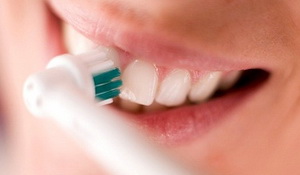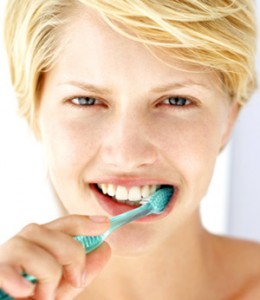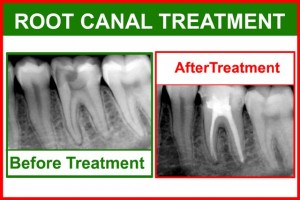Tooth brushing is generally effective in removing food debris and plaque on our teeth. However there are certain sites and conditions inside the mouth that could not be cleaned merely by toothbrushing alone. Therefore other plaque removal methods and devices should be utilized other than toothbrushing in our oral hygiene regime, which includes rinsing. Continue reading
Tag Archives: toothbrushing
How to Use an Electric Toothbrush to Brush Teeth
An electric toothbrush is a toothbrush usually powered by a battery to move the brush head. Electric toothbrushes can be battery-operated or rechargeable, and can be of rotary or sonic movements. Most powered toothbrush manufacturers do not recommend a specific brushing method; however, the electric brushes should be used in a specified manner. Continue reading
Toothbrush Techniques
Many toothbrushing methods have been introduced during the last 50 years and most are identified by an individual’s name, such as Bass, Stillman, Charters, or by a term indicating a primary action to be followed, such as roll or scrub. No one method shows consistently better results in removing plaque than scrubbing. Most people brushing with an instructed professional method are not aware that they are brushing in a specific way. Therefore it may be more effective for individuals to improve their own method. Continue reading
Toothbrushing Basics
Various methods of tooth brushing have been recommended and classified to the type of motion performed by the brush. In reality it does not matter exactly how a toothbrush is used, as long as plaque is effectively removed without trauma to the gums. Where plaque still persists, the dental professional should teach effective oral hygiene. The recommended toothbrushing method will depend upon the dexterity of the individual as well as the position of the teeth. The vibratory Bass technique is the most useful and will be described in detail. Continue reading
How to Prevent and Avoid a Root Canal Treatment
Root canal treatment is a dental procedure commonly used to treat infected or necrotic teeth. It offers an alternative to having the troubled tooth extracted, provided that the root canal system is accessible with reasonable negotiation as close as practicable to the end of the root. The tooth also needs to have an adequate amount of remaining tooth structure and good surrounding bone support.
Why do teeth need root canal treatment?
Teeth requires root canal when the pulp of the tooth has been pathologically involved through decay or periodontal infection such that the pulp is progressively dying or already dead. The pulp in this context refers to the nerve and blood vessel supply of the teeth, which provides sensation and nutrients to the teeth. When bacteria invades the root canal system, it slowly colonize the area to eventually infiltrate the whole canal and causing death of the pulp. Bacteria can still grow on dead pulpal tissue, allowing precipitation of more toxins and causing an infection, which can spread outside to the underlying jawbone and supporting tissues. Despite the nerve being dead, the surrounding tissues still possess neural innervation and this contribute to the pain perception when infection associated with a necrotic nerve is involved. Continue reading




